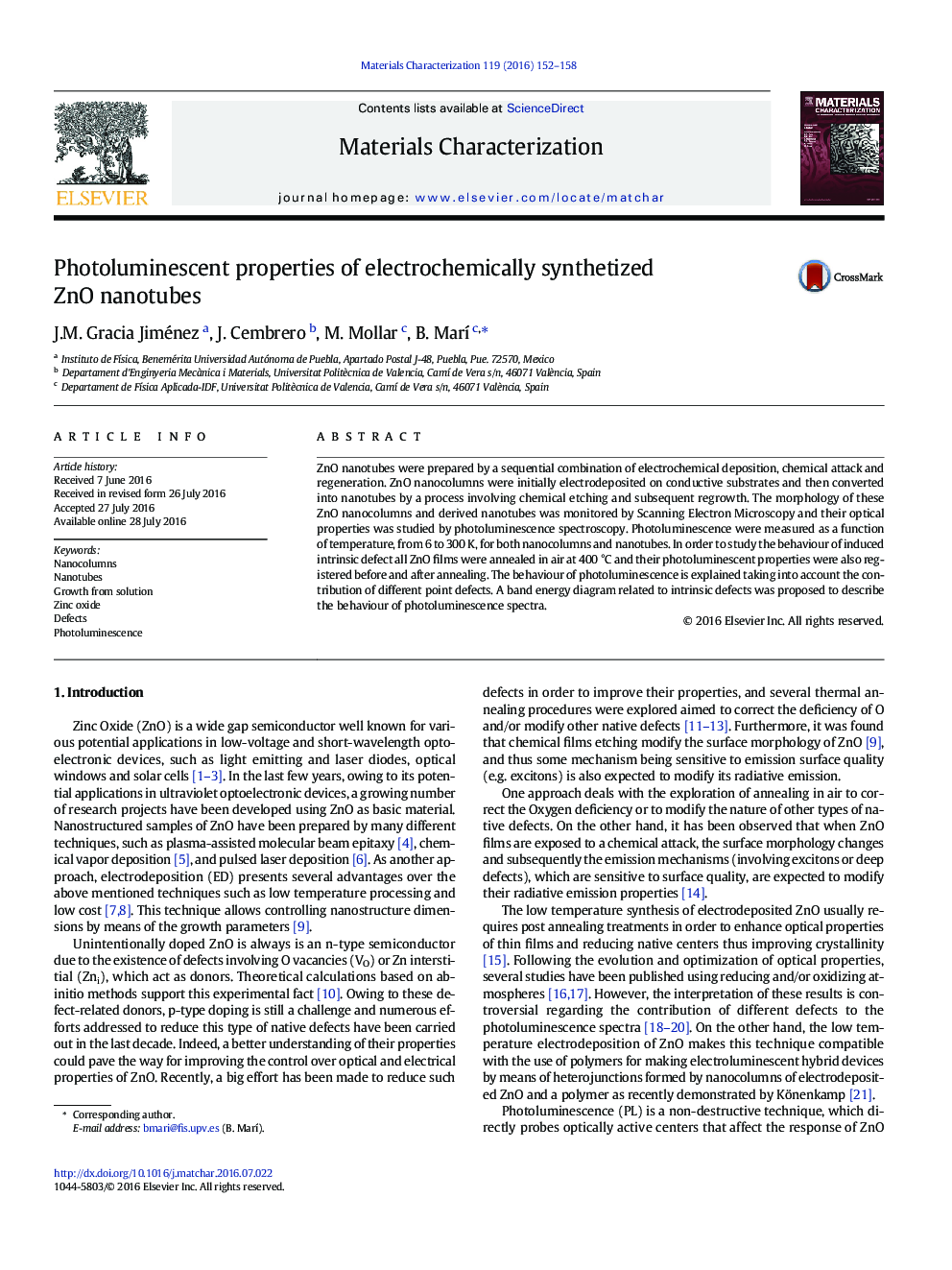| Article ID | Journal | Published Year | Pages | File Type |
|---|---|---|---|---|
| 1570644 | Materials Characterization | 2016 | 7 Pages |
•ZnO nanotubes were obtained after etching and regrowth of electrodeposited ZnO films.•Photoluminescence spectra contain two parts involving excitonic and defects transitions.•Annealing produces a blue shift in the PL peaks in both ZnO nanocolumns and nanotubes.•Etching causes a blue shift in PL peaks due to confinement effect in nanotubes walls.
ZnO nanotubes were prepared by a sequential combination of electrochemical deposition, chemical attack and regeneration. ZnO nanocolumns were initially electrodeposited on conductive substrates and then converted into nanotubes by a process involving chemical etching and subsequent regrowth. The morphology of these ZnO nanocolumns and derived nanotubes was monitored by Scanning Electron Microscopy and their optical properties was studied by photoluminescence spectroscopy. Photoluminescence were measured as a function of temperature, from 6 to 300 K, for both nanocolumns and nanotubes. In order to study the behaviour of induced intrinsic defect all ZnO films were annealed in air at 400 °C and their photoluminescent properties were also registered before and after annealing. The behaviour of photoluminescence is explained taking into account the contribution of different point defects. A band energy diagram related to intrinsic defects was proposed to describe the behaviour of photoluminescence spectra.
